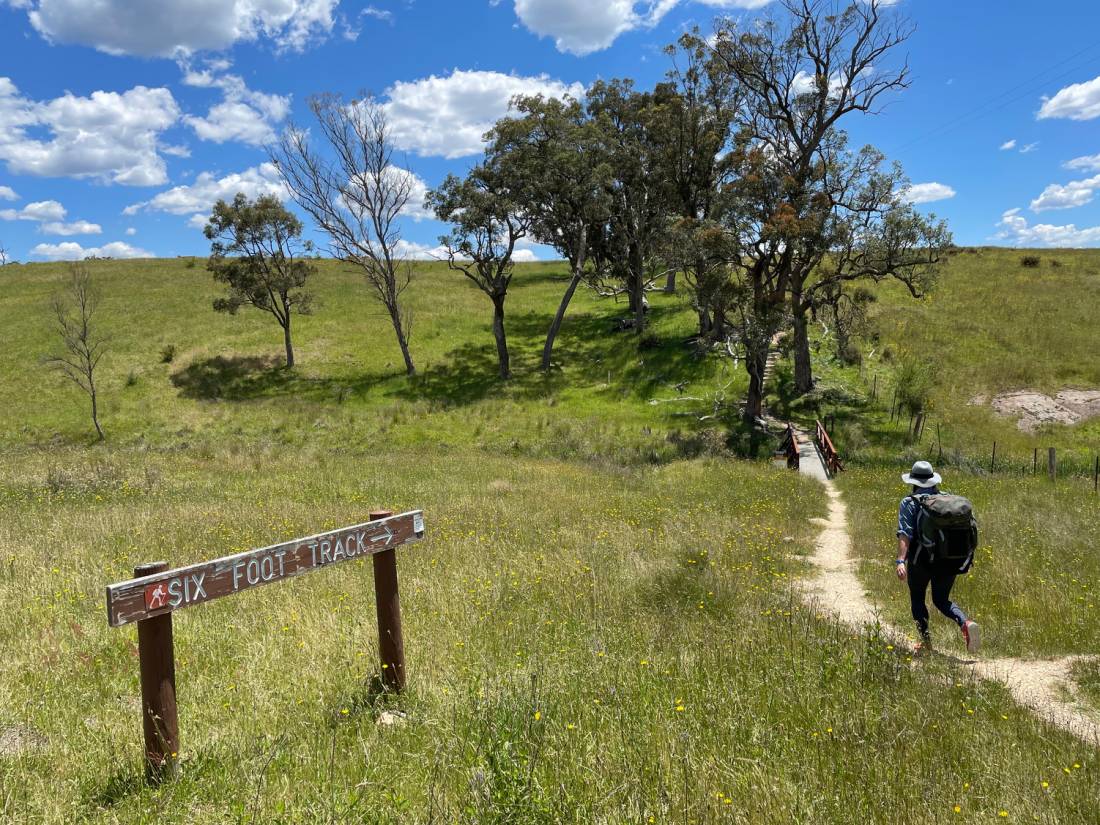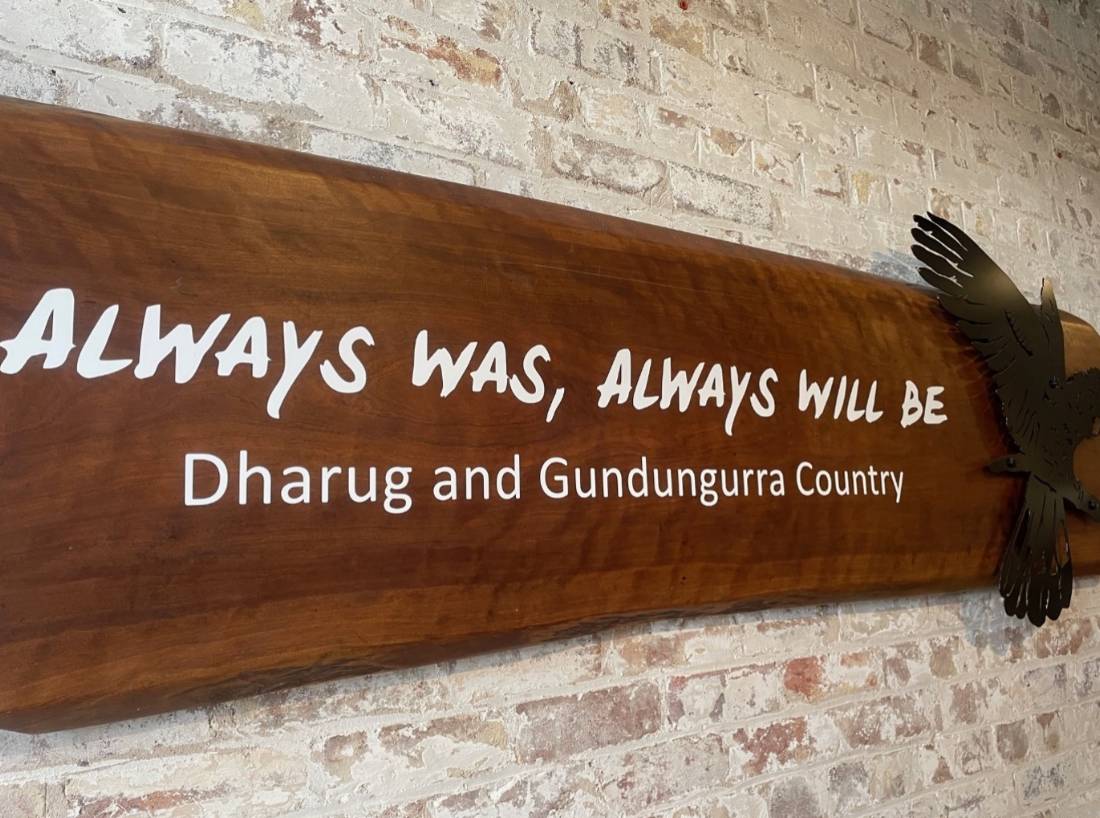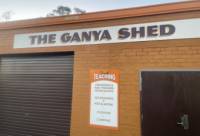Blog home / Aboriginal heritage in the Blue Mountains: honouring the culture
When I started working as an outdoor adventure guide in the Blue Mountains, the famous Six Foot Track – a three-day, 45km bushwalk between Katoomba and Jenolan Caves – was my first paid gig.
Guiding that historic walk and wanting to do justice to its Indigenous heritage led me to a book called
Cullenbenbong, written by Bernard O’Reilly, whose family lived at Cullenbenbong in the late 1800s and early 1900s.
This Kanimbla Valley community of pioneering white settlers was also home to Indigenous people like the Gundungurra leader Billy Lynch (c1839-1913).
Lynch, whose tribal name was Mawiak, would walk the
Six Foot Track to Katoomba to sell bush honey, rabbits and possum-skin rugs to tourists.
He later led Blue Mountains Aborigines to settle in The Gully community on the outskirts of Katoomba, where the last fluent speakers of Gundungurra probably died about the time of WWII.

Majestic thunder
The O’Reillys had the privilege of hearing Lynch and others speak in Gundungurra and this is what Bernard wrote of that experience:
“If you listened to the Aborigines speaking together you didn’t hear a jumble of foreign words, you heard the sighing of trees, the voice of birds, the sounds of storm and flood and wind, the rolling of rocks in a landslide… It is with regret then and some shame that the name Cullenbenbong must be written here; how cold and lifeless it looks in white man’s type, yet to hear it pronounced by the black warriors of the old Kanimbla tribe was to hear majestic thunder re-echoing amongst the granite mountains of their hunting grounds. What did Cullenbenbong mean? My father, Peter O’Reilly, probably knew, but that knowledge has gone with him, as have ten thousand other things I’d give my right hand to know.”
I love retelling this story on Blue Mountains Adventure Company (BMAC) and World Expeditions adventures. It's a powerful reminder of the tragic loss of a language shaped by thousands of years of life in the Blue Mountains.
Like O’Reilly, I’d give my right hand to be able to speak Gundungurra and know another ten thousand things about the Aboriginal heritage of the Blue Mountains.
O’Reilly’s book also happily reminds us that, despite all we have lost, there is still plenty that is preserved about the Blue Mountains Aboriginal heritage that BMAC and World Expeditions guides can share on our adventures.
Wonderful books have been written by the likes of Jim Smith, Grace Karskens, Jim Barrett and Eugene Stockton that shed light on Aboriginal life here. There are also fantastic resources on the Internet such as Trove, where you can look up the astonishing 1896 interview Billy Lynch gave to the Sydney Mail newspaper about what life was once like for Aboriginal people in the Blue Mountains.
Uncle David & Uncle Lex
An even better source of knowledge is to rub shoulders with current local Indigenous elders such as Uncle Lex Dadd (Dharug) and Uncle David King (Gundungurra), pictured below.
Some non-Indigenous guides feel uncomfortable talking about Indigenous issues, but I believe it is appropriate as long as it is done with integrity. Using language is crucial to this integrity. We still know about 1200 Gundungurra words and can use those words when we tell the stories of the Gundungurra.
As we hike out of Empress Canyon, a highly popular canyoning adventure in the Blue Mountains, I love to stop at a lookout with a stunning vista to the south, over Gundungurra country, and tell of the gunyungalung – the Dreamtime of the Gundungurra – when this epic landscape was created by a series of battles between Mirragan (a giant tiger quoll) and Gurangatch (a part-fish, part-reptile creature).
Resurrecting Indigenous Language
Work is ongoing to resurrect the Dharug language of the Blue Mountains and we can still count to 10 in the language of the Dharug:
- Wagul
- Bulla
- Bulla wagul
- Bulla bulla
- Dhamara (hand)
- Dhamara wagul
- Dhamara bulla
- Dhamara bulla wagul
- Dhamara bulla bulla
- Dhamara dhamara
We can remind people that Blue Mountains place names such as Katoomba, Megalong and Kanangra are Aboriginal and everyday words like waratah, koala and billabong come from the Indigenous languages of the Greater Blue Mountains World Heritage Area.
We can tell our clients that the village of Mt Victoria might be named after a British queen, but Billy Lynch said this place was called Kinderan.
The Coxs River might be named after the man who supervised the convict team that built the first road over the Blue Mountains, but to the Gundungurra it was Therabulat.
Welcoming friends to country: 'Warami Mittigar'
“Bimbiigang” (greetings) and “Warami mittigar” (welcome friends) to the “Ngurra” (country) of the Gundungurra and Dharug people: That’s how I love to greet people as they walk through the door of BMAC in Katoomba.
The Greater Blue Mountains World Heritage Area is blessed to be home to six Aboriginal language nations and, as you walk into the BMAC Katoomba office, there’s a prominent sign to remind us all that this corner of the Blue Mountains “Always was, always will be Dharug and Gundungurra Country”.

BMAC's commitment to Indigenous cultural respect
I’ve been blessed to live here nearly all my life and am double-blessed to have worked as a guide for more than a decade at Blue Mountains Adventure Company, an organisation that genuinely strives for reconciliation and honours Indigenous culture.
This commitment is reflected in so many ways. There are posters, maps and signs on the office walls and information on the BMAC website that celebrate Indigenous culture.
There’s the connection BMAC has with Uncle Lex’s The Ganya Shed at Wentworth Falls, where BMAC guides are paid to do odd jobs and learn from Uncle Lex about Dharug culture.

There’s the encouragement for guides to learn as much as possible about Indigenous culture and make that knowledge a key part of every adventure.
There’s the triple eco-certification BMAC worked hard to achieve from Ecotourism Australia, which recognises BMAC for “helping to preserve and respect Australian indigenous cultures”.
BMAC also has ROC (Respecting Our Culture) certification from Ecotourism Australia. The Ecotourism Australia website explains that ROC-certified tourism operators “are committed to protecting cultural authenticity and integrity, developing sound business practices, environmental protection and acknowledging Indigenous peoples’ spiritual connection to the land and water”.
The World Expeditions Travel Group, which BMAC is part of, has its own ratified Reconciliation Action Plan. BMAC manager Andy Mein was a champion of this plan and Gundungurra elder Uncle David King worked on it as an Aboriginal community representative.
Colomatta
In recent years, historian Grace Karskens and a team of Dharug researchers discovered an 1829 list of Indigenous names that included Colomatta (phonetically pronounced Gu-lum-ada), 'Place of the Koala' - for the Blue Mountains. The Geographical Names Board of NSW is now considering this as an official alternative name for the Blue Mountains.
Nearly 200 years after that list was written, I’m looking forward to wearing a shirt that says I work for Colomatta Adventure Company. And as the Dharug like to say: Yanama budyari gumada – may we all walk together with good spirit!
Words by Dan Lewis, a guide at Blue Mountains Adventure Company